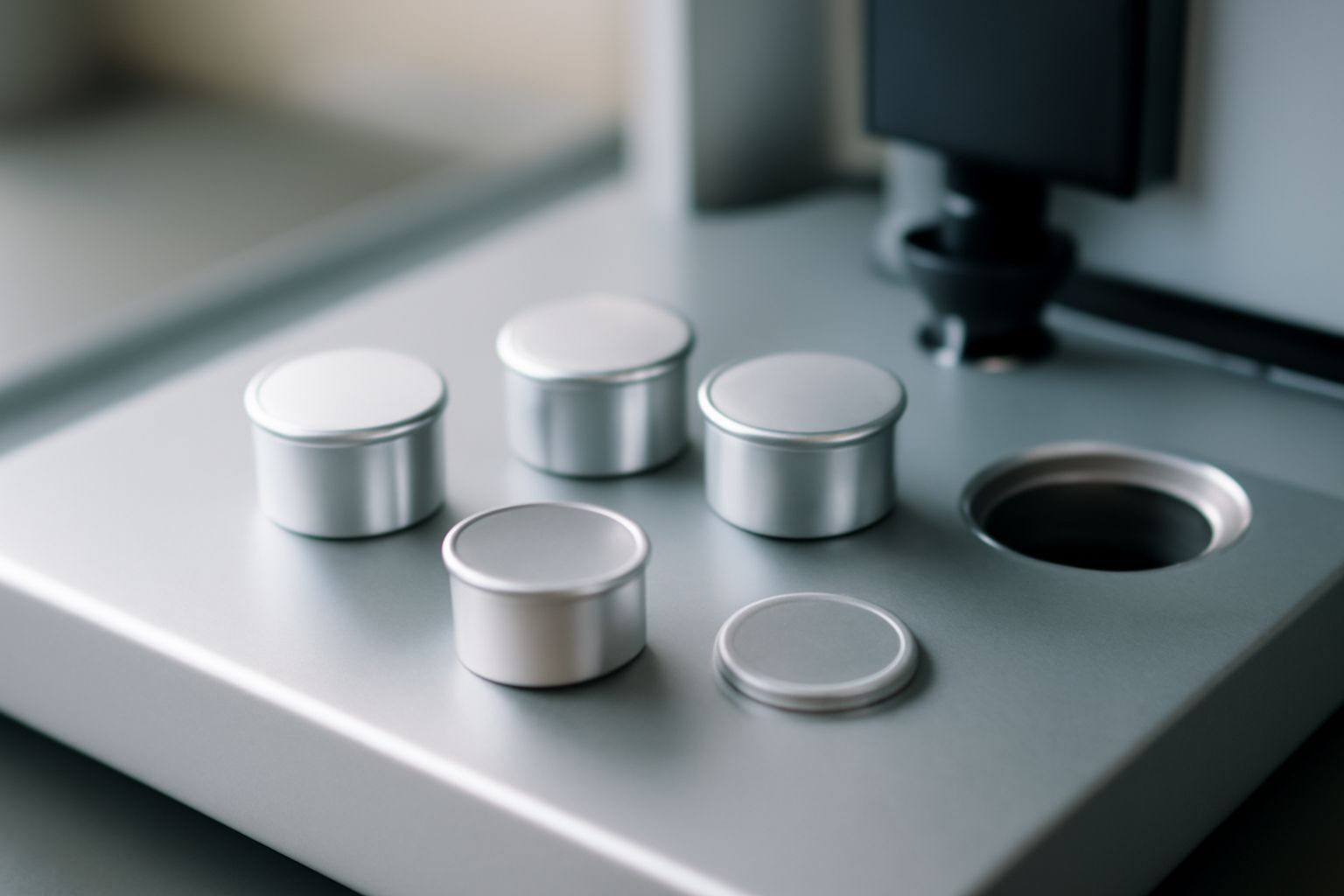Your cart is empty.
shop now
Your cart is empty.
shop now
Making the wrong crucible choice can waste both samples and time. Accurate DSC results depend on matching crucible features to your specific needs.
To choose the right aluminum crucible for DSC testing, consider size, purity, sealing ability, and compatibility with your instrument. Always check these points before ordering for optimal results.

Understanding every aspect of your crucible order helps you avoid missed deadlines, faulty data, and overspending. Taking time to decide now makes your lab workflow smooth and cost-effective with every DSC experiment.
Testing can fail if the wrong crucible features are used. Reliable data is a result of proper selection for both material and test type.
Consider crucible size, material purity, sealing method, special coatings, and instrument compatibility when buying aluminum crucibles for DSC.
| Factor | Details | Why Important? | Recommended Standard |
|---|---|---|---|
| Size/Shape | Choose by sample type and mass | Better fit, reduces error | Follow DSC supplier guide |
| Purity | Look for 99.99% aluminum pans | Avoids contamination | High-purity, especially for sensitive samples |
| Sealing Ability | Snap-on, crimped, or vented lids | Keeps volatiles, stops leakage | Match to sample volatility |
| Coatings | Gold, PTFE, or custom anti-stick layers | Needed for sticky or reactive samples | Based on application (DSC) |
| Instrument Match | Fit to TA, Mettler, PerkinElmer, NETZSCH | Avoids signal error, ensures correct results | Get matching reference pans |
When I select crucibles, my checklist always starts with pan purity and then size. High-purity aluminum, such as 99.99%, stops sample contamination. I make sure sealing choices match volatile or sensitive samples, and if needed I request gold-coated or PTFE-coated pans. This careful approach helps avoid errors and gives me the right DSC curve each time.
The right crucible brings better signal, while poor quality introduces error. To improve DSC data, every lab should understand product differences.
Aluminum crucibles can differ in thermal conductivity, thickness, internal coating, and batch uniformity, all of which impact DSC signal and baseline.
| Feature | High Quality | Low Quality | Impact for DSC Testing |
|---|---|---|---|
| Purity | ≥99.99% aluminum | <98% aluminum | Impacts background, can add noise |
| Thickness | ±0.005mm deviation | >0.01mm deviation | Affects baseline drift and reproducibility |
| Internal Surface | Smooth, clean, no residue | Rough, has scratches | Increases error, loses sample |
| Coatings | Even, application as requested | None, or patchy | Affects sticky sample testing, adds artifacts |
In my experience, switching to high-purity, well-machined crucibles cuts measurement error and makes interpretation easier. For advanced DSC methods, I make sure every batch comes with quality control records. My best runs use pans with consistent wall thickness, little weight deviation and flat rims. These details help me trust melting onset and glass transition data, and are backed up by published studies like those in the ACS Omega journal.
Labs sometimes need only a few pans, either for validation or for rare materials. Buying too many can waste budget or add storage problems.
Many suppliers now offer aluminum crucibles in packs of 10, 20, or 50, which supports small batch needs in R&D, QA, and pilot tests.
| Pack Size | Who Needs | Buying Scenario | Order Route |
|---|---|---|---|
| 10 pcs | University, pilot study | Method validation, short projects | Online, B2C shops |
| 20-50 pcs | Quality control teams | Routine sample runs | Direct, or e-stores |
| 100+ pcs | Production labs, reference labs | Large program, high-frequency tests | Bulk contract, export |
I like to offer flexibility when labs reach out. Small packs allow clients to test crucible fit or function before placing a large order. For start-ups, pilot studies, and researchers with funding cycles, being able to purchase as little as 10 per box is useful. Suppliers like REDTHERMO and others have built systems so you can order a precise amount without long wait times. See online shopping for more about how digital B2C channels make sourcing faster for labs worldwide.
Cost is always a pressure for labs, but you never want to trade reliability for price. It is important to know what to expect for each material type.
Aluminum crucibles are typically 5-12 times less expensive than platinum alternatives. Compared to ceramic or quartz, they also offer more cost-efficient and repeatable performance.
| Crucible Material | Average Cost (USD/unit) | Reuse? | When to Use Alternative |
|---|---|---|---|
| Aluminum | $0.40–$1.10 | No (usually disposable) | Standard DSC, polymers, QA |
| Platinum | $10–$15 | Yes | High-temp, corrosion-resist |
| Ceramic | $2–$6 | Sometimes | Batteries, glass, lithium |
| Quartz | $2–$10 | Yes | Acids, hydrofluoric media |
For my clients, cost is a clear deciding point. Most university labs and companies run hundreds of samples, so disposable aluminum pans keep payroll and supply costs in check. Switching to platinum only makes sense if harsh chemicals or very high temperatures risk pan failure. Ceramic and quartz are specialty, not daily, solutions. Based on market research, over 85% of daily DSC runs use aluminum due to both price and precision for standard tasks.